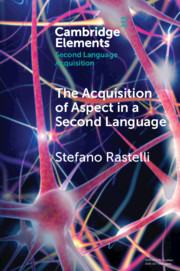This study examines the second language acquisition of Spanish past tense morphology by three groups of English speakers (beginners, intermediates and advanced). We adopt a novel methodological approach – combining oral corpus data with controlled experimental data – in order to provide new evidence on the validity of the Lexical Aspect Hypothesis (LAH) in L2 Spanish. Data elicited through one comprehension and three oral tasks with varying degrees of experimental control show that the emergence of temporal markings is determined mainly by the dynamic/non-dynamic contrast (whether a verb is a state or an event) as beginner and intermediate speakers use Preterit with event verbs but Imperfect mainly with state verbs. One crucial finding is that although advanced learners use typical Preterit–telic associations in the least controlled oral tasks, as predicted by the LAH, this pattern is often reversed in tasks designed to include non-prototypical (and infrequent) form–meaning contexts. The results of the comprehension task also show that the Preterit-event and Imperfect-state associations observed in the production data determine the interpretation that learners assign to the Preterit and the Imperfect as well. These results show that beginner and intermediate learners treat event verbs (achievements, accomplishments and activities) in Spanish as a single class that they associate with Preterit morphology. We argue that dynamicity contrasts, and not telicity, affect learners’ use of past tense forms during early stages of acquisition.


